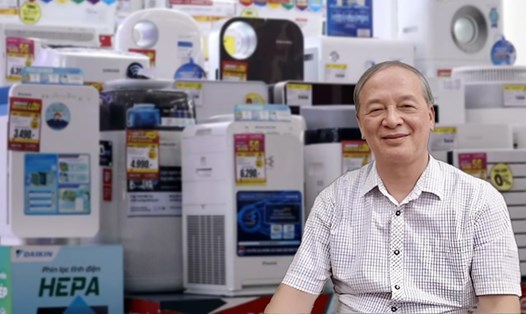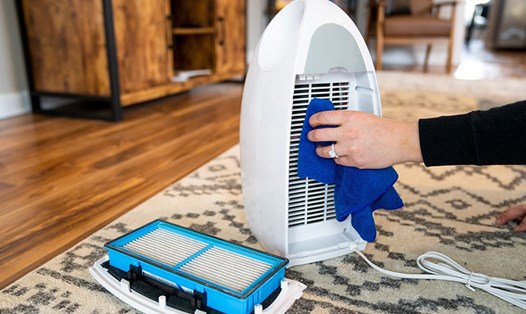Air purifiers and ionizers are two popular devices that improve indoor air quality, but they work on different principles, providing different efficiencies and user experiences.
Air purifiers use a system that draws air through physical filters, typically HEPA filters, which can help remove up to 99.97% of small particles, including dust, pollen, and bacteria.
This makes air purifiers the perfect choice for people with allergies and respiratory problems, as the filters are able to block and trap particles that can cause irritation.
Meanwhile, the ionizer releases negative ions (-) or positive ions (+) into the air to eliminate pollutants and irritants in the air. The negative ions will bind to dust particles, pollen and bacteria, then make them fall onto surfaces in the room.
This method can be effective for very small particles but is less effective when dealing with larger particles. Another disadvantage of ionizers is that they can produce ozone during operation, which can irritate the respiratory tract and is especially unsuitable for people with chronic respiratory conditions such as asthma.
According to the EPA, ionizer users should take care to clean surfaces regularly to remove any lingering microscopic dust particles, which can otherwise be re-stirred into the air by movement.
Today's air purifiers often incorporate activated carbon filters to reduce odors and volatile organic compounds (VOCs), helping to remove cigarette smoke, cooking odors, and other harmful gases, improving overall air quality. This means that users will need to replace the filter after a period of use to always have clean air in the living space.
Ionizers, on the other hand, have a simpler structure and do not come with a filter, so the average price of an ionizer is more affordable for most users.
Based on the characteristics of each type, experts recommend that, regardless of which type is chosen, users should combine it with natural ventilation measures or use additional filtering devices to achieve optimal efficiency in improving the air. Some modern devices can integrate both air filters and ionizers, providing convenience and versatility.
Both devices are useful in an increasingly polluted living environment, but users need to carefully evaluate according to specific needs to have the most suitable choice for their health.










